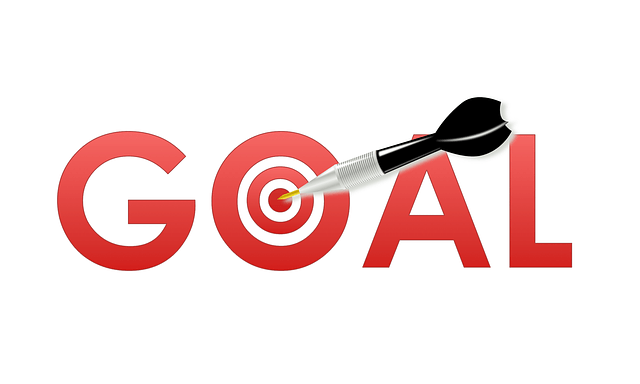Posts Tagged ‘chiropractic’
Balancing out the Junk!
Define: Junk Food
It’s the kind of food that gets your mouth watering at the very thought. We can all think of our favorite junk food, but what does the term really entail? From McDonald’s to freezer pizza to donuts, junk food is pre-prepared food that has little to no nutritional value. It is usually high in processed ingredients, sugar and bad fats. It is formulated to taste great and treat your brain’s reward complex, make you feel full and give you the baseline of nutrition to stay alive but not much more!
Junk food is not your friend
All that sugar:
- Spikes blood-sugar levels
- Inflames tissues
- Raises blood pressure
- Raises and drops insulin levels
The fat raises levels of undesirable cholesterol and your risk for type 2 diabetes while the sodium causes your body to retain water, making you feel bloated but also contributing to an enlarged heart muscle.
Balancing out the junk food diet
So you’ve gone on a junk food bender and you are looking to recover. Don’t feel bad- with our on-the-go lifestyle, the drive-thru or ready made meal is almost an essential from time to time. However, it is important to not make this your only source of fuel. Below we have come up with ways to balance a junk-food bender.
- Anti-inflammatory ingredients: junk food has a tendency to raise inflammatory markers in the blood, which makes it important to balance this by eating anti-inflammatory ingredients. Adding turmeric to your next stir fry is a great place tos tart.
- Water, water, water! to fight inflammation and nourish the cells of your body.
- High-fiber foods: to balance blood sugar and optimize the function of your gut.
- Healthy starches: rather than the good-for-nothing starches that characterize junk food.
Food is fuel so therefore food should be your friend!
At our office in Park Slope, we are aware of the difficulties inherent in a fast paced lifestyle; we are often at the mercy of the clock which leaves us little room for choice when its time to eat. If eating is a constant challenge, let us help you find the time to eat right and make healthy decisions across the board.
Dr. Karen Thomas, D.C.
Finding Success with Goal-Setting
Goal-setting helps you figure out where to start
Spring, the season of renewal, is right around the corner and there is no better time than spring to make powerful changes in your fitness routine. While it is more common to make fitness resolutions at New Years, we think it makes more sense to start when the weather is warming and the colors are getting brighter- there just seems to be more energy to tap into. For people looking to shed their winter skin and join in the movement of spring, it can help to focus on realistic goal-setting. Start by finding yourself on the fitness spectrum, with no shame: are you a no-fitness-fanatic, a dedicated gymrat, or something in-between. Before you set any goals, it is important to be honest with yourself and know just where you stand.
A checklist for success in goal-setting
- Choose an appropriate time frame
- Start with just one goal
- Write it down
- Schedule the time
Make goal-setting easier with our help at Community Chiropractic & Acupuncture
The feeling of fully achieving a goal can be a powerful incentive to continue with more ambitious goal-setting in the future. Let’s leave the winter in the rear view mirror and reap the benefits of the season to get our bodies feeling their healthiest. If you need help addressing long-standing limitations such as muscle pain or problems stemming from spinal conditions, we are your resource! At our office in Park Slope, we will help detect the true cause of your dsyfunction and create a plan for healing that will allow you to focus on successful goal-setting. Give our office a call to schedule an appointment today!
Dr. Karen Thomas, D.C.
Making Life in the Commuter Lane Less Painful
If commuting is an inevitable part of your lifestyle, keep the damage at bay…
…by being proactive. There is no use denying it: commuting is a stress inducer- to the body and to the brain, it can be hard to find positives for sitting in traffic twice a day besides the fact that it gets you to work to earn your daily bread. If we must commute, let’s be smart about it: here are some ways that we came up with to negate the effects of a commuter lifestyle.
In the car, keep the zen alive.
- Driving posture: stay upright with hands at 9 and 3. Use a rolled up jacket to support the lumbar
- Deep breathing: Use this time to focus on establishing a pattern of deep breathing and get the oxygen you need to stay sane.
- Podcasts: while the news is important, it can add to your stress level. Switch it up and focus on a subject you love with a podcast; it will keep your brain engaged and happy.
- Comfortable shoes: wait til you reach the office to put on those stiff shoes! Slippers can be a comfortable way to commute.
- Stretching: the neck and lower back are the regions which take the most damage during a drive- simple stretches can reverse this damage.
On the train, take a deep breath.
- Focus on relaxing activities: reading, listening to your favorite music or a podcast.
- Progressive relaxation: tense a different muscle group with each inhale and release on the exhale.
- Massage yourself: focus on trigger points to release muscles from tension.
Don’t let stress sink you before you reach the office
These techniques can help you stay balanced as you enter the workplace and this sets you off on the right foot. One way that we help at Park Slope Chiropractic is by reversing the damage that may have been wrought from years of commuting. By focusing on keeping the spine in balance and reversing muscle tension, we can help you experience less pain which is sure to take a bit of stress out of the picture.
Dr. Karen Thomas, D.C.
Do you have a Forward Head?
Forward head posture is a modern conundrum
When interacting with a mobile device, chances are your posture is less than perfect. Unless you have the perfect ergonomic set up at all times of the day, you are likely to slip into a position where you are slumped forward or craning down over a cell phone. This behavior conditions the muscles of our neck into a forward head posture, away from its center of gravity, the spine.
Forward head posture is problematic because for each inch your head is held forward, another 10 pounds of pressure is added to the spine.
Now consider that many people we see are walking around with their heads forward 2-3 inches without even realizing and you begin to see how pervasive the problem is in our society. If you carry this kind of weight around, you are also carrying a greater likelihood for degenerative spinal conditions and painful muscle strain.
Adapting for our spine’s sake
Do you have forward head posture? Perform the wall test by standing straight up against a wall with heels shoulder-width apart and shoulder blades touching the wall. Does the back of your head touch the wall? Be honest. If not, this is a good indicator that you are carrying your head forward throughout the day. If this is the case, don’t freak out! It is a reversible problem; the sooner you start the better!
Approaching the Forward Head Problem
Because you have repetitively trained your neck muscles into holding your head forward, we need to train them differently. There is a likelihood that certain muscles such as the occipitals and sternocleidomastoid are overly-tight. We focus on releasing these muscles from tension and strengthening the muscles that matter for holding your head centered atop the spine. Behavior and awareness are equally important- if you notice your head creeping forward throughout the day, make a correction. Soon enough your head will naturally rest where it is supposed to be-atop your body!
Dr. Karen Thomas, D.C.
Breathing for Relaxation
Breathing is an important tool in moments when you feel overwhelmed.
When you are stressed, your breathing becomes more shallow: the kind of quick, panicked breath that sees your chest expanding. With this kind of breathing, you are not getting nearly enough oxygen to nourish the cells in your body and brain, and stress escalates quickly. The solution is to first realize this is happening in the moment- you are overwhelmed and you need to regain control. A signal way to do this is to make a conscious effort to slow down your racing brain by breathing slower.
Breathing slower helps you achieve:
-
A reduction in blood pressure
-
A healthier circulation of oxygenated blood to the cells of the body and brain
-
Less tension in muscles
-
Boosts energy
These qualities translate to you feeling:
-
Sharper mentally
-
Clearer in mind
-
Less pain in the body
-
Less anxiety
Step up the relaxation one more notch with balanced breathing
A deep, diaphragmatic breath is one that contracts the diaphragm, draws air in through the nose and fills the lungs to the very bottom, where the blood is circulating; this kind of breath is characterized by the abdomen expanding rather than the chest. In moments of stress, take a minute to focus on breathing.
- Close your eyes to block out extra stimuli
- Breathe in for four seconds and out for four seconds evenly
- Link your breaths together in one fluid cycle
The rhythm does wonders, as does the influx of oxygen rushing to cells in need. At Community Chiropractic & Acupuncture, we believe that breathing is a powerful way to influence relaxation. At our office in Park Slope, we encourage a lifestyle that keeps stress at bay through chiropractic adjustment, attention to chronically tense muscles and the use of acupuncture to heal pain and fight anxiety.
Dr. Karen Thomas, D.C.
Body Weight Training
What could be easier than body weight training?
There is no money to be spent, no gym membership or dumbbell set, no need to go anywhere; your only investements are the pounds you already possess and a bit of time out of your day. Chances are you already know the basics of each exercise (a push up for example) and with a bit of planning, you could turn these basic exercises into a full body workout.
Body weight training is efficient
Body weight training is efficient at helping maintain a healthy weight. When combined with light aerobic activity, (i.e. the jumping jack, or a lung jump followed by a jog back), body weight training is one of the most efficeint ways to burn calories.
Some other advantages of body weight training include:
-
Increasing relative strength
-
Boosting reactive strength
-
Encouraging better circulation
-
Strengthening the core to help with low back pain and posture
These sound exactly like the advantages to be gained from regular weight training! Body weight training works the best in circuits, whereby you move from exercise to exercise without a break and then repeat if possible. This burns calories quick, trains your heart to work at a higher level and boosts Post Exercise Oxygen Consumption, keeping your metabolism elevated for hours after the work out.
Body weight training is compatible with modern lifestyles.
Are you someone who thinks there is not enough time in the day for a full work out? Body weight circuits can be done in as little as 10 minutes in front of the television- now try telling me there isn’t enough time in the day. For help optimizing and indeed, modernizing your work out plan to fit into your hectic lifestyle, give our office in Park Slope a call to schedule an appointment today.
Dr. Karen Thomas, D.C., L.Ac.
A Workout in Miniature
“No time for a workout,” you say?
On days when you can’t make it to the gym or you wake up with no ambition to go for that run, there are still things you can be doing to stimulate your brain and body. It just takes a little bit of creativity: workouts can be done in small doses (1-10 minutes) that still capture the same benefits as a full workout.
A quick workout should:
-
Get your heart rate up
-
Move your muscles to remove them from a state of constant contraction
-
Encourage blood to flow more freely to all parts of the brain and body.
Micro-workouts serve a purpose
They do serve a very important purpose of bailing you out on days when a full workout is not on the cards. Focus on simplicity: you should be able to jump up from your seat at work and dive into a workout within your personal space. Examples of this include 5 minute yoga or pilates routines, 60 seconds of jumping jacks or 20 push-ups in an hour. Planking is great because all it asks is for you to get into and hold a position for as long as you can! The weight of your body and the position will condition the parts of your core which count for maintaining good posture throughout the day.
Make your space workout-accessible
Keeping a set of dumbbells, a yoga mat or a jumping rope stowed underneath your desk allows you to jump in and out of a workout whenever you have a spare moment. Workouts are about discipline so it makes sense to start small and work your way up- the important part is that you get your body moving throughout the day when you would otherwise be sedentary.
Dr. Karen Thomas, D.C.
Seasonal Depression: What You Need to Know
From winter fatigue to seasonal affective disorder, the grey months have a tendency of getting us down.
And there is a perfectly logical biological explanation: the shortage of daylight hours upends the hormone that controls sleep and waking cycles and leaves you feeling less energetic toward life. The hormone, known as melatonin, may be produced in greater quantities due to the lack of light, and this has a direct effect on mood and energy. There is nothing we can do about the quality of light during winter, so managing your seasonal depression demands a multi-dimensional strategy.
Exercising the factors that are within our control to fight seasonal depression: addressing your lifestyle.
-
Diet: a major factor in seasonal depression is a lowering of energy. There are foods we can use to add energy in and substances we can limit that take energy out.
-
Exercise: besides getting your heart rate up and your endorphins rushing, exercise gets you outside to reap what little natural light is available and this goes a long way toward fighting seasonal depression.
-
Environment: sit next to open windows, light candles and relax; fight stress on all fronts! This is the best way you can keep the incursions of seasonal depression at bay.
Boosting vitality with chiropractic and acupuncture in order to fend off seasonal depression.
Limiting the effect or degree to which seasonal depression affects your life comes down to making healthy decisions and managing stress; these are two major ways we specialize in helping you adjust your lifestyle for the change of season. If seasonal depression has got you feeling listless or apathetic, click here to find out how our treatments balance the body and energize the mind
Dr. Karen Thomas, D.C.
Making the Low Back your Best Friend
The anatomy of the lumbar region is the key to its importance.
Located in the lower back are the five largest vertebrae by diameter in the spinal column. These five bones are the literal backbone of a region whose primary importance is bearing the weight of the upper body. Exiting the spinal column at this level is a network of nerves called the lumbar plexus which influences the very basis of movement- the mechanics of the abdomen and legs.
Why is the lumbar region so often injured?
There are many answers to this question but it is most often a question of degredation: over time, the thousands of micro-movements that we put our bodies through on a daily basis compound and cause degredation of the structures and muscles which provide our stability and weight-bearing duties. This phenomenon of age is often exacerbated when we don’t take proper care of our bodies; by carrying extra weight; by letting our muscles fall by the wayside; by succumbuing to almost constant poor posture. The most common underlying causes for low back pain include:
- Muscle strain
- Disc herniation
- Disc degneration
- Bone spurs
- Breakdown of the cartilage
How we help at Community Chiropractic & Acupuncture in Park Slope
We want to first focus on prevention. If you are lucky enough to have a lower back that doesn’t cause you too much trouble, NOW is the time to start strengthening it to prevent a future of dysfunction and potential pain. Through strengthening the auxiliary muscles, teaching awareness and application of proper posture and teaching good body mechanics, we can ensure that the lower back is not overburdened. And if it is, we provide you with the chiropractic adjustment, decompression and muscle treatment therapies that make a difference in helping speed up recovery from injury. Give our office a call to schedule an appointment today.
Dr. Karen Thomas, D.C.
Tightness in the Shoulders and Upper Back
Chronically tight shoulders
What does it mean to have chronically tight shoulders? It means leaving work every day with that twinge of tightness at the base of the neck; that slight bit of pain that can be felt when we articulate our shoulders overhead. We become so used to it because we can function without fixing it, but is this how we go about other problems? Maintenance of our body is like the maintenance of a house or car: pain and stiffness are the signals that tell your brain something needs to be fixed.
The role of the trapezius
The trapezius is essentially the central muscle in the upper back, and it is divided into three parts: upper, middle and lower. The upper trapezius connects from the lower back of the head to the clavicle and is the most active in a sit-heavy lifestyle. Are you familiar with that hunched over look that is so common in the office? It is a definitive posture of the desk-bound worker in which the upper trap is constantly contracted, pulling the shoulders up and inwards. Simultaneously, the middle and lower traps, which usually play a role in shoulder stabilization, are not being called upon to do anything so they weaken from lack of use, further shifting the burden of stabilization and articulation onto the upper trap. And voila, your shoulders are stiff and sore.
Shoulder tightness is a vicious cycle
If we let it go on long enough, chances are that something will give, and it could happen with even the most basic daily motion. Fortunately, chiropractic is tailor made for addressing tight shoulders. Because the problem is of a mechanical and muscular nature, we focus on releasing them muscles of the upper back from tension by using trigger point therapy. Using chiropractic adjustment, we restore balance to the thoracic spine, removing nerve irritation and improving range of motion. From here, it is a matter of strengthening and stretching the right muscles to ensure that they work in harmony to help you maintain good, pain free posture. Shoulder and upper back tightness are not normal and should not be treated as such; if you need help reversing this vicious cycle, give our office in Park Slope a call to schedule an appointment today.
Dr. Karen Thomas, D.C.










